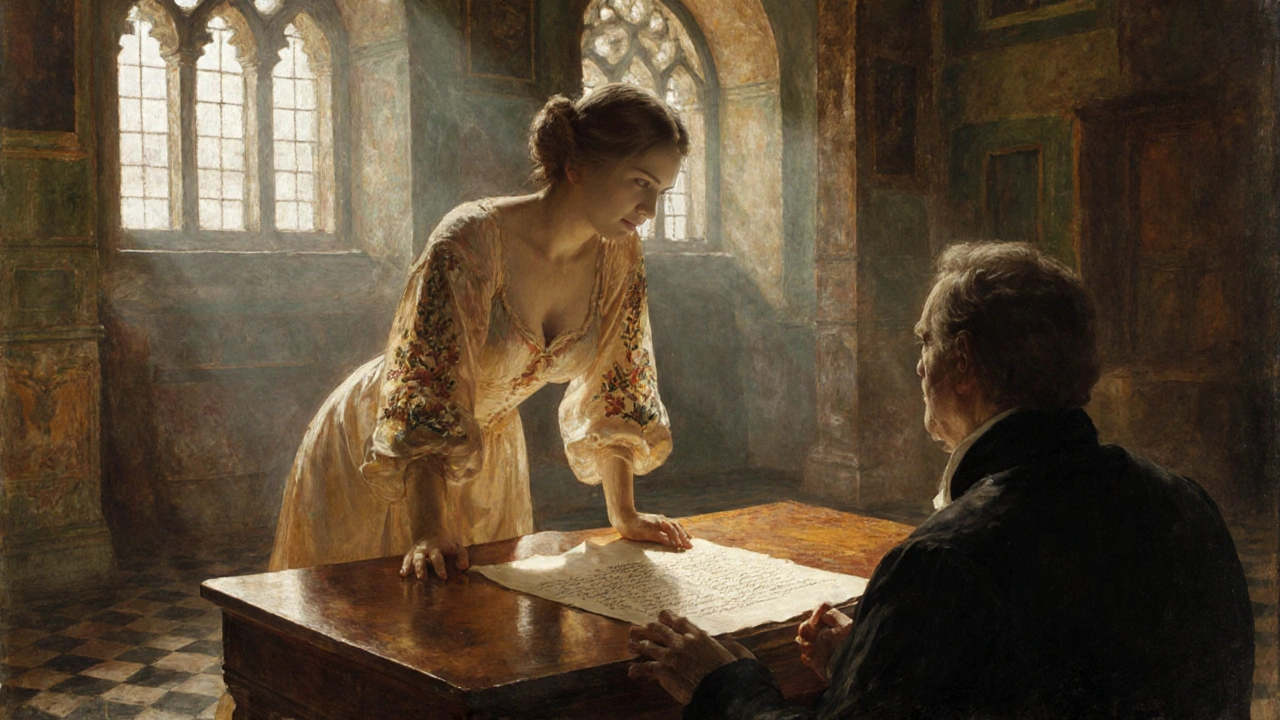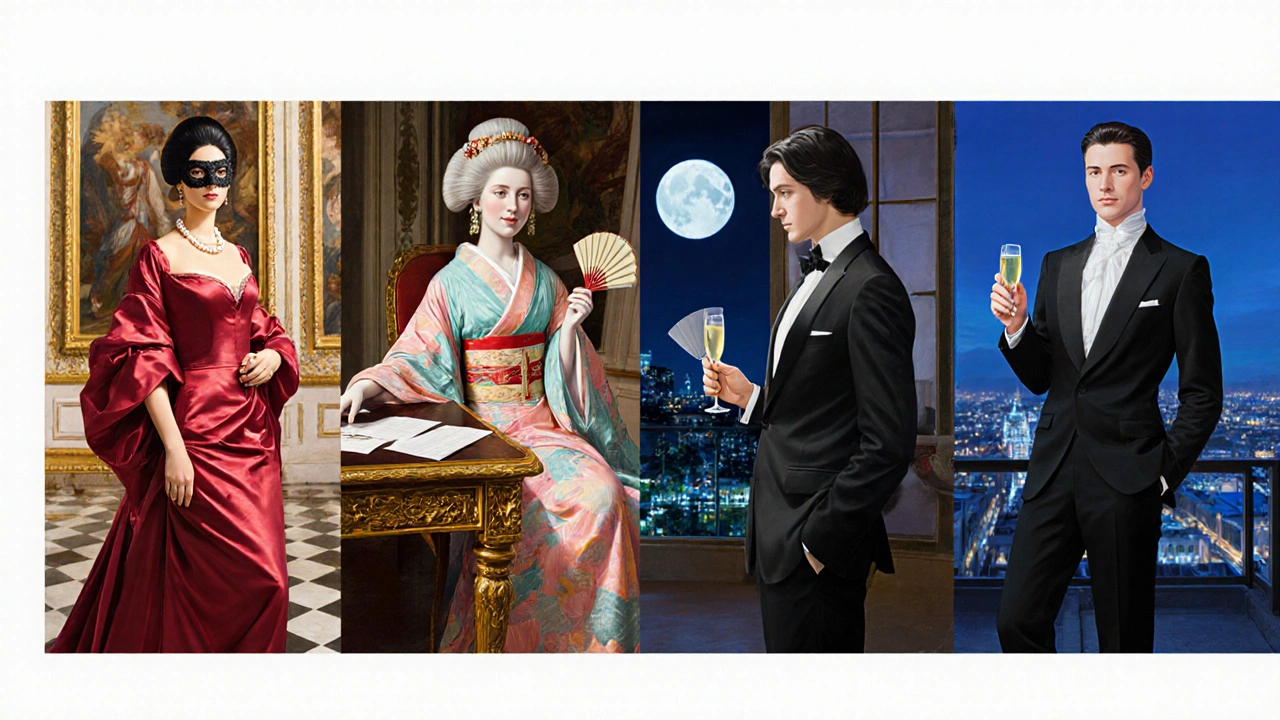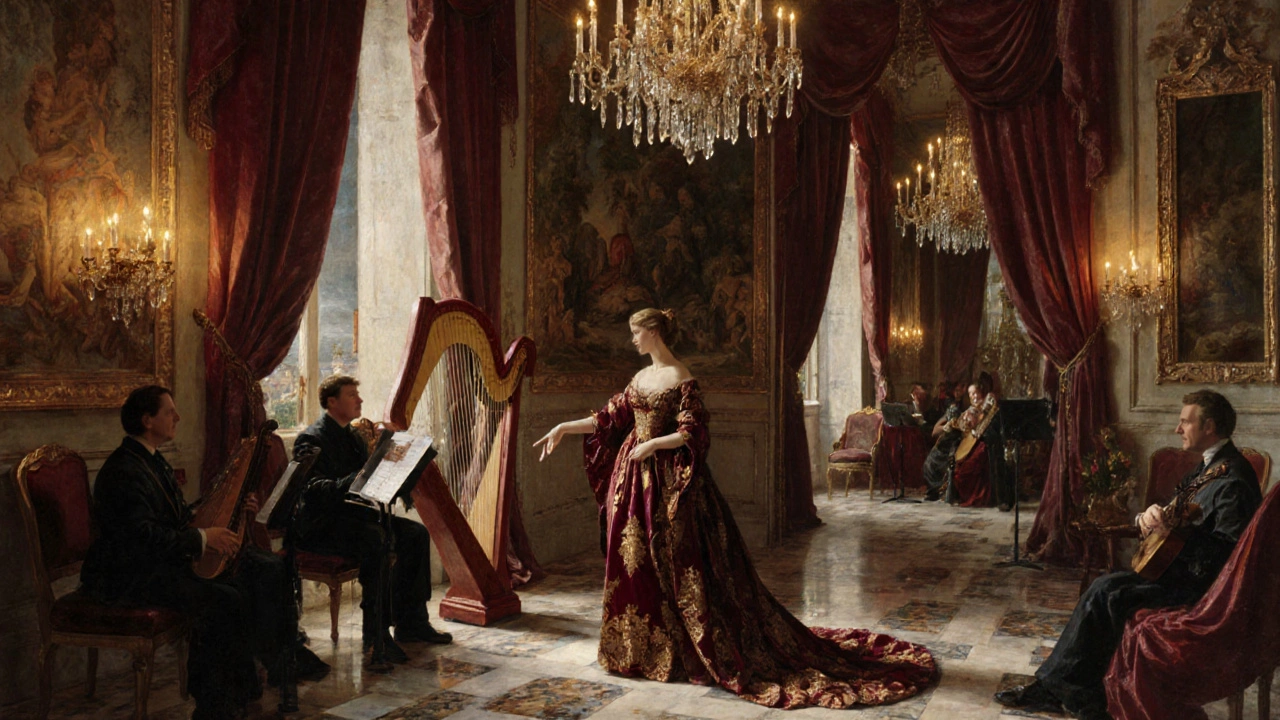When you hear the word "courtesan," images of lavish parties, silk gowns, and whispered intrigue pop up. But were those bonds rooted in genuine affection, or were they just high‑priced contracts? Below we break down the facts so you can decide whether courtesan relationships were love affairs or business deals.
Direct Answer
Courtesan relationships were a blend of both. They operated within a structured patronage system that treated companionship as a valuable service, yet many courtesans cultivated deep emotional ties with their patrons, blurring the line between transaction and affection.
Key Points
- Courtesans served elite clients in exchange for money, gifts, and social protection.
- Unlike street‑level prostitution, they offered cultural refinement, education, and political networking.
- Many historic courtesans, such as Italy’s Camilla, built lasting friendships that resembled true partnership.
- Their contracts often included clauses about loyalty, discretion, and even emotional support.
- Modern scholarship treats courtesanship as a distinct social class where love and commerce co‑existed.
Comprehensive Guide to Courtesan Relationships
Imagine strolling through a 16th‑century Venetian palazzo, where a beautifully dressed woman greets you not just with a smile, but with verses, music, and insight into the latest political gossip. That was the world of the courtesan - a professional companion who wielded cultural capital as power.
To understand whether these connections were heartfelt or purely transactional, we need to explore their origins, social roles, and day‑to‑day realities.
Definition and Context
Courtesan is a highly educated, socially adept companion who, for a fee or patronage, provides intimacy, entertainment, and intellectual conversation to wealthy clients. Unlike ordinary sex workers, courtesans operated in elite circles, often serving as muses, political advisors, and cultural ambassadors. The term derives from the Italian "cortigiana," meaning "woman of the court" - a nod to their proximity to power.
Key historical periods include:
- Renaissance, especially in Italy, where city‑states like Venice and Florence cultivated a thriving class of courtesans.
- The French Ancien Régime, where maîtresse en titre (official mistresses) became political influencers.
- Japan’s Oiran and Geisha cultures, which, while distinct, shared the concept of paid refined companionship.
Benefits of Courtesan Companionship
Patrons didn’t just buy a night of pleasure; they purchased access to:
- Education: Courtesans were often fluent in multiple languages, taught patrons poetry, and explained art trends.
- Social Mobility: A noble could discreetly improve his reputation by being seen with a renowned courtesan.
- Political Insight: Because courtesans mingled with diplomats, they could relay rumors and negotiate alliances.
- Emotional Support: Many patners confided their anxieties, and courtesans acted as trusted confidantes.
These perks turned what might look like a simple transaction into a multi‑layered partnership.

Types of Courtesans Across Regions
While the core idea remains the same, regional variations created distinct flavors:
- Italian Cortigiana - Operated in Venice, Florence, and Rome. Known for literary talent, they often hosted salons.
- French Maîtresse en titre - Official state‑recognized mistresses like Madame de Pompadour, who wielded governmental influence.
- Japanese Oiran - High‑ranking courtesans skilled in dance, tea ceremony, and poetry; they commanded premium fees.
- Chinese "Sheng Nu" (Living Widows) - Upper‑class women who took lovers for companionship without marriage, a cultural parallel.
How Courtesans Found Patrons
Unlike modern dating apps, courtesans relied on structured networks:
- Salons and Balls: Hosted in aristocratic homes where courtesans performed.
- Letters of Introduction: A star courtesan’s reputation circulated via handwritten endorsements.
- Guilds: In Venice, the "Compagnia delle Cortigiane" regulated fees and protected members.
- Patronage Contracts: Formal agreements listed obligations, duration, and gifts.
These channels ensured a steady flow of elite clients while safeguarding the courtesan’s status.
What to Expect During a Historical Courtesan Encounter
Step into a typical evening:
- Arrival: The courtesan greets you at a private suite, dressed in silk, with a small entourage of musicians.
- Conversation: Topics range from recent diplomatic treaties to the latest madrigal composition.
- Entertainment: She might sing an aria, recite poetry, or lead a short dance.
- Intimacy: Physical affection follows, but it’s framed within the broader cultural exchange.
- Departure: A token-jewelry, a handwritten sonnet, or a promised future meeting-is given.
The experience was less about secrecy and more about mutual enrichment.
Pricing, Contracts, and Booking
Courtesans charged in multiple ways:
| Region | Fee (Gold Coins) | Typical Contract Length | Additional Perks |
|---|---|---|---|
| Venetian Cortigiana | 50‑150 | Seasonal (3‑6 months) | Invitation to masquerade, private art lessons |
| French Maîtresse | 200‑500 | Indefinite, often lifelong | Title, influence at court, property |
| Japanese Oiran | 30‑80 | Monthly | Tea ceremony, exclusive kimono fittings |
Contracts were written on vellum, specifying discretion clauses, exclusive rights, and sometimes a “break‑up” fee if either party ended the agreement early.

Safety Tips for Historical Courtesans
Even in privileged circles, courtesans faced risks:
- Reputation Management: A single scandal could end a career. Courtesans kept detailed ledgers of gifts and interactions.
- Legal Protection: Some city‑states granted them limited legal standing, but only if they filed official contracts.
- Health Precautions: Regular herbal remedies and baths were common to prevent illness.
- Financial Safeguarding: Many saved a portion of earnings in family vaults, ensuring independence from any single patron.
Comparison Table: Courtesan vs. Prostitute vs. Modern Escort (2025)
| Aspect | Courtesan (Historical) | Prostitute (Historical) | Modern Escort (2025) |
|---|---|---|---|
| Clientele | Elite aristocracy, diplomats | General public | High‑net‑worth individuals, business travelers |
| Services | Intimacy + education + networking | Sex only | Companionship, travel, events |
| Social Status | Respected cultural figure | Stigmatized | Varies; often discreet |
| Contractual Terms | Formal, written agreements | Informal, per‑act payment | Agreements via agency or app |
| Longevity | Decades-long careers possible | Often short‑term | Depends on market demand |
FAQ: Your Questions About Courtesan Relationships Answered
Did courtesans ever marry?
Some did, but marriage usually meant giving up the courtesan title. A famous example is the Venetian courtesan Barbara Strozzi, who married a composer after years of patronage.
How did courtesans learn arts and languages?
Many were educated in convent schools before entering the profession. Wealthy families sometimes funded their tutors so they could appeal to elite clients.
Were courtesans considered “prostitutes” by the church?
The Church generally condemned prostitution, but courtesans occupied a gray area. Some clergy even acted as patrons, viewing the relationship as a patron‑artist dynamic rather than sin.
What happened to courtesans after the fall of monarchies?
The decline of aristocratic courts reduced demand. Many transitioned to theater, writing, or became salon hosts for the emerging bourgeoisie.
Can modern “high‑society companions” be considered descendants of courtesans?
In many ways, yes. Contemporary elite companions blend cultural knowledge, networking, and intimacy, echoing the historic courtesan model, though today they operate under different legal and ethical frameworks.
Call to Action
If you’ve ever wondered how love and business can coexist, the history of courtesan relationships offers a striking example. Dive deeper into the lives of famous courtesans, explore their letters, and see how modern companionship services still borrow from their playbook.


Eddie Valdes
October 16, 2025 AT 13:43Alright, let’s break this down systematically. Courtesanship was essentially a sophisticated patron‑client contract, codified in both legal and social terms, which means love and commerce were never truly separable. First, the economic model: patrons provided financial security, gifts, and social capital, while courtesans delivered cultural capital-poetry, music, political intel-effectively acting as freelance diplomats. Second, the emotional layer: many letters and diaries from the era reveal genuine affection, but that affection was often calibrated to reinforce the transactional bond, creating a feedback loop where sentiment enhanced loyalty and, consequently, profit. Third, the power dynamics; unlike generic prostitution, courtesans negotiated terms, sometimes demanding exclusivity clauses, which mirrored modern employment contracts more than simple services. Fourth, the social status: they could sit in salons, influence policy, and even shape artistic movements, which gave them a leverage rarely afforded to other sex workers. Fifth, the legal frameworks in places like Venice mandated written agreements, further institutionalizing the business aspect. Sixth, the legacy: the persistence of the courtesan archetype in contemporary elite companionship shows that the blend of affection and commerce is a timeless market strategy. In sum, the historical evidence points to a hybrid model where love was a tool, not an exception, and business was the scaffold for that tool to exist. So, while some individual relationships may have tipped toward genuine romance, the overarching system was designed as a mutually beneficial economic enterprise, and that’s why it survived for centuries.
Vikram Sinha
October 17, 2025 AT 17:30Interesting synthesis, and I appreciate the careful structuring. Grammatically, the article rightly distinguishes between "courtesan" and "prostitute"-the former is a noun denoting a role with higher socio‑cultural capital. Philosophically, the duality you describe aligns with the ancient concept of "oxymoron" in social contracts: love as a veneer for exchange. The tone feels measured, and the factual density matches the scholarly tone of the original post. Overall, a well‑balanced reflection on a complex historical phenomenon.
Jenn Davenport
October 18, 2025 AT 21:17Wow, the drama of those salons still gives me chills! 😍 The idea that a kiss could come with a sonnet and a secret political tip feels straight out of a novel.
Dan Mihai
October 20, 2025 AT 01:03Yo, let me drop some high‑brow jargon on this. The courtesan archetype epitomizes the symbiotic exchange of affective labor and pecuniary capital, a true embodiment of cultural intermediation. Their salons acted as nexuses of intel, where the lingua‑franca of patronage was encoded in verses and veiled diplomatic cues. Misspelling? Nah, just a stylistic deviation to signal non‑conformity within elite circles. The whole contracual framework was basically a proto‑venture‑capital deal, with the courtesan as the startup founder leveraging soft power. So yeah, love was a strategic asset, not just a feeling.
gangadhar balina
October 21, 2025 AT 04:50The analysis overlooks the intrinsic Indian perspective where similar practices were rooted in dharma and societal duty. Our ancient courts cultivated artists who were simultaneously beloved and compensated, proving that this model is not a foreign import but a universal truth. Modern narratives should acknowledge that our cultural heritage pioneered this blend long before European courts.
Michelle Yu
October 22, 2025 AT 08:37Cool take, Dan, but remember the modern elite companion market is far more regulated and less romanticized than the historic version.